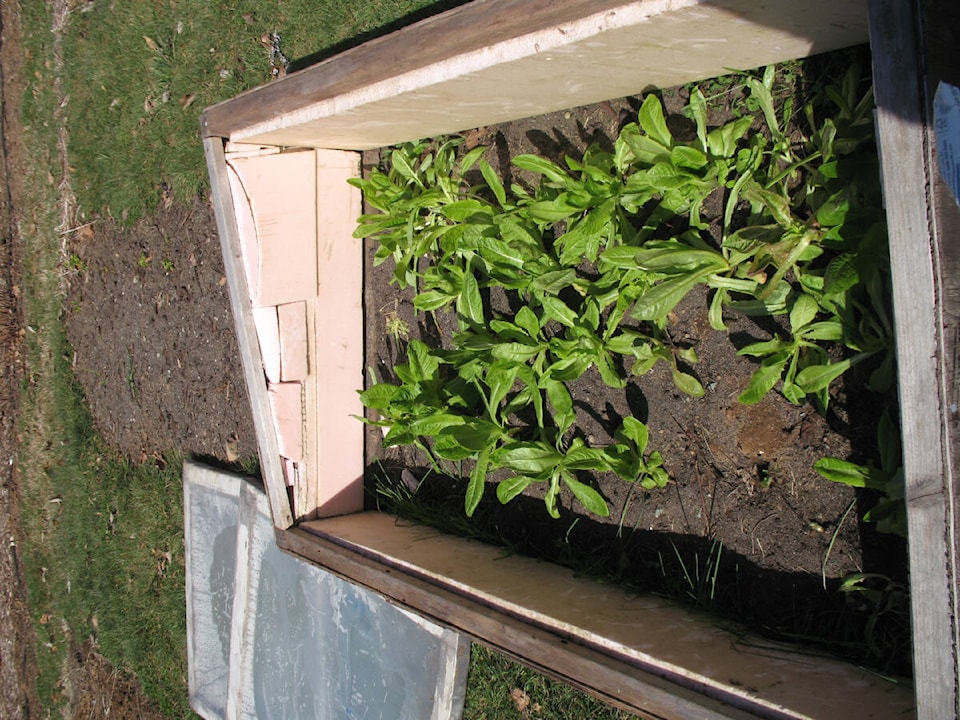By Mary Lowther
Yahoo! The Romaine lettuce I planted in the cold frame last fall has grown enough for a harvest of thinnings — enough for three meals for two of us.
I’m adding a bit of organic fertilizer to encourage more growth but still covering the cold frame at night because the last below zero temperature here is April 23. For comparison, I planted some lettuce seedlings outside of the frame at the same time in the garden and it’s either mostly been eaten or died from the frost, or both. Evidently the frame wasn’t attractively warm enough for slugs, or they didn’t like this particular variety (Winter Density).
We probably would have had more over the winter months if I had trotted out in the snow to clear it off more often and removed the lid on sunny days, and if I had sown more on the seed table to transplant as we ate the ones in the frame, but it’s better late than never. The ones I recently sowed in flats in the greenhouse to transplant this spring are still only an inch high, so the cold frame was worth it. This frame has taken a bit of a beating over the last two years so I’ll fix it up or maybe convince David that he wants to do it.
Romaine lettuce, (also called cos, but the jury is still out as to whether this term refers to the Greek island Cos, where the Romans discovered it, or the Arabic term for lettuce, khus). In her book The Fine Art of Salad Gardening, Annie Proulx writes that cos was brought back to Rome and became so widely grown that it was identified with the city. When the papacy moved to Avignon during the so-called Babylonian Captivity, cos lettuce was grown in their gardens and came to be referred to by the French as “Romaine” lettuce, from Rome.
David says they can call it what they want, as long as he gets to eat it. The English often tie the middle of the lettuce when it’s three quarters grown, producing a blanched inner head, but David has abandoned his roots long enough to have thrown off this artifice and enjoys the full bodied flavour of the North American grown, deep green Romaine.
Given how quickly this lettuce is growing in the cold frame, perhaps I can encourage David to make us another one for next winter, and now I’m having good thoughts about buying some more clear plastic to make tunnels. The ones I’ve used in the past became too worn to re-use and I must admit, I just haven’t wanted to spend the money on more, but seeing new growth on these lettuces so early this year makes it seem worthwhile to bite the bit and buy some more plastic.
Please contact mary_lowther@yahoo.ca with questions and suggestions since I need all the help I can get.
